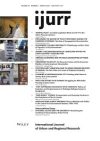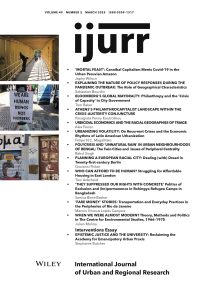Emerging urban studies scholarship has shown how cities are not fraught with one single crisis but are in a state of polycrisis, with the global South’s experience of polycrisis differing significantly in how the crises originate and in the strategies employed to deal with them. Urban Bengal’s polycrisis originates in imaginations of the urban in London in the eighteenth century, but has taken on a different shape as inhabitants find modes of survival. Today, in the broader context of the climate change crisis affecting the twin cities of Bengal, this article explores the Howrah–Kolkata relation and lack of peripheral centrality that has generated a sense of polycrisis in Bengal. I begin by contextualizing rain in the twin cities and its change to ‘unnatural’ for the periphery observed in recent years. I trace an aqueous history of the region and the growing socio-economic inequalities between them. I take the Urban Howrah and Park Street neighbourhoods from Howrah and Kolkata respectively to locate the sense of the polycrisis that inhabitants have been experiencing and dealing with. Here, I use class and gender as two frames to map issues of mobility, insecurities, solidarities and the infrastructural access necessary for survival in the urban. I conclude by arguing for a reworking of the twin cities’ relations by centralizing peripheries like Howrah, both to lessen the polycrisis affecting both and the urban pressure on the core—Kolkata.
Details
Written by:
Rahul Singh
Digital Object Identifier (DOI)
https://doi.org/10.1111/1468-2427.13295
About DOI

